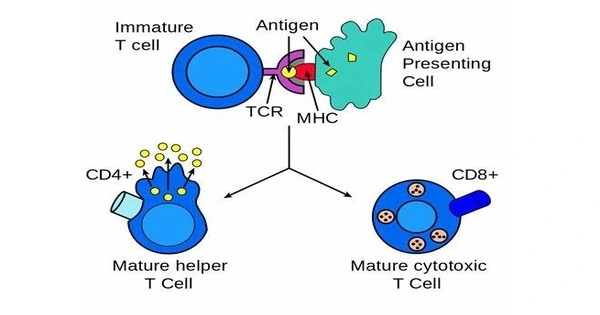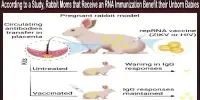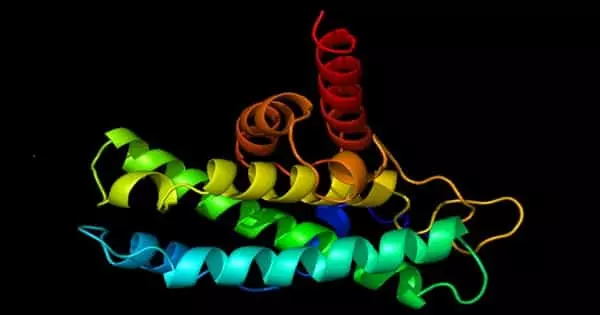Antigen presentation is a critical immune process that is required for T cell immune response activation. It is a critical process in the immune system that plays an important role in the body’s defense against pathogens such as bacteria, viruses, and other microorganisms. Because T cells recognize only fragmented antigens displayed on cell surfaces, antigen processing must occur before the antigen fragment can be recognized by a T-cell receptor. This process involves the presentation of antigens (molecules that can elicit an immune response) to immune cells, specifically T cells.
The fragment, which is bound to the major histocompatibility complex (MHC), is transported to the cell’s surface, a process known as presentation. If the cell has been infected with viruses or bacteria, MHC molecules will present an endogenous or exogenous peptide fragment derived from the antigen.
Types
There are two types of MHC molecules which differ in the behaviour of the antigens: MHC class I molecules (MHC-I) bind peptides from the cell cytosol, while peptides generated in the endocytic vesicles after internalisation are bound to MHC class II (MHC-II).
- Major Histocompatibility Complex (MHC) Class I Presentation: MHC class I molecules are found on the surface of almost all nucleated cells in the body. They present antigens derived from intracellular pathogens, such as viruses or certain bacteria, that have infected the cell. The antigens presented by MHC class I molecules are typically peptides generated from the degradation of cytoplasmic proteins.
- Major Histocompatibility Complex (MHC) Class II Presentation: MHC class II molecules are primarily found on the surface of antigen-presenting cells (APCs), such as macrophages, dendritic cells, and B cells.They present antigens derived from extracellular pathogens, such as bacteria and parasites, that have been engulfed and digested by the APC.
Intracellular and extracellular environments are separated by cellular membranes. Because an MHC molecule in one cell can bind to a wide range of peptides, each T cell can only recognize tens to hundreds of copies of a unique sequence of a single peptide among thousands of other peptides presented on the same cell. It is difficult to predict which (fragments of) antigens will be presented to the immune system by a specific MHC/HLA type, but the technology involved is improving.
















